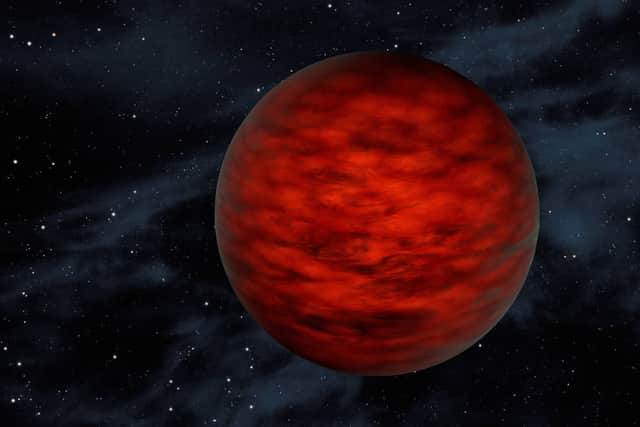'Failed Star' found emitting radio waves 37 light years from Earth
and live on Freeview channel 276
Astronomers have found a "failed star" just 37 light years from Earth, that is colder than a campfire on Earth, yet is still producing radio waves - a rare phenomenon.
The star, which has been classed as an "ultracool brown dwarf" is only 425C on its surface, and is now known as the coldest known star to emit radio waves.
Advertisement
Hide AdAdvertisement
Hide Ad

What is a failed star?
A failed star, also known as a Brown Dwarf, is not big enough to be able to sustain the nuclear fusion of hydrogen in its core, which is the process that defines main-sequence stars.
This star isn't the coolest brown dwarf ever discovered, as some "failed stars" have been found with temperatures as low as 10 degrees Fahrenheit (minus 23 degrees Celsius). However, these ultracold brown dwarfs were not producing out radio waves.
This star, called T8 Dwarf WISE J062309.94−045624.6, was found by astronomers at the University of Sydney and is the coolest so far found analysed by radio astronomy.
This finding is rare, but the question of why some brown dwarfs produce radio waves still eludes scientists.
Advertisement
Hide AdAdvertisement
Hide AdHow was this star found?
T8 Dwarf WISE J062309.94−045624.6 was first seen by California Institute of Technology (Caltech) scientists in 2011 using the Wide-field Infrared Survey Explorer (WISE).
The brown dwarf has a width between 65% and 95% that of Jupiter, the largest planet in the solar system. The failed star is much bigger than the gas giant planet, however, with anywhere from between 4 and 44 times the mass of Jupiter.
“It’s very rare to find ultracool brown dwarf stars like this producing radio emission,” says lead author Kovi Rose, a University of Sydney PhD student.
“That’s because their dynamics do not usually produce the magnetic fields that generate radio emissions detectable from Earth. Deepening our knowledge of ultracool brown dwarfs like this one will help us understand the evolution of stars, including how they generate magnetic fields.”
Advertisement
Hide AdAdvertisement
Hide AdIt is believed that ultracool dwarfs’ rapid rotation may play a part in generating strong magnetic fields which can ionise the star’s atmosphere and create electrical currents. In the case of this star, it’s thought that electrons flowing into the magnetic polar regions of the star, which is rapidly rotating, are producing regular, repeating radio bursts.
“We’ve just started full operations with ASKAP and we’re already finding a lot of interesting and unusual astronomical objects, like this,” says co-author Professor Tara Murphy. “As we open this window on the radio sky, we will improve our understanding of the stars around us and the potential habitability of exoplanet systems they host.”
Analysis of the star’s radio-wavelength emissions is published in the Astrophysical Journal.
Comment Guidelines
National World encourages reader discussion on our stories. User feedback, insights and back-and-forth exchanges add a rich layer of context to reporting. Please review our Community Guidelines before commenting.
